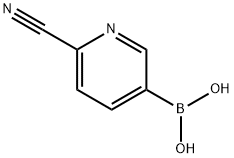6-Hydroxyindole
Synonym(s):6-Indolol
- CAS NO.:2380-86-1
- Empirical Formula: C8H7NO
- Molecular Weight: 133.15
- MDL number: MFCD00152101
- EINECS: 417-020-4
- SAFETY DATA SHEET (SDS)
- Update Date: 2025-12-17 09:49:21

What is 6-Hydroxyindole?
Chemical properties
White to off-white shiny crystalline powder
The Uses of 6-Hydroxyindole
- Reactant for preparation of tryptophan dioxygenase inhibitors pyridyl-ethenyl-indoles as potential anticancer immunomodulators
- Reactant for asymmetrical synthesis of notoamide J as a potential biosynthetic precursor of prenylated indole alkaloids
- Reactant for preparation of (quinolinyloxymethyl)isoxazolecarboxylate esters antituberculosis agents
- Reactant for preparation of indolyl(propanolamine) derivatives as HIV inhibitors
- Reactant for preparation of indoleoxyacetic acid derivatives as peroxisome proliferator-activated receptor agonists
- Reactant for preparation of 1-aroylindole 3-aroylindoles combretastatin A-4 analogs as antitumor agents and tubulin polymerization inhibitors
What are the applications of Application
6-Hydroxyindole is a reactant for asymmetrical synthesis of notoamide J
Synthesis Reference(s)
Journal of Medicinal Chemistry, 35, p. 2419, 1992 DOI: 10.1021/jm00091a010
Properties of 6-Hydroxyindole
| Melting point: | 125-128 °C |
| Boiling point: | 343.2±15.0 °C(Predicted) |
| Density | 1.327±0.06 g/cm3(Predicted) |
| storage temp. | Sealed in dry,2-8°C |
| solubility | Chloroform (Slightly, Heated), Methanol (Slightly) |
| pka | 10.07±0.40(Predicted) |
| form | Shiny Crystalline Powder |
| color | White to off-white |
| CAS DataBase Reference | 2380-86-1(CAS DataBase Reference) |
Safety information for 6-Hydroxyindole
| Signal word | Danger |
| Pictogram(s) |
 Corrosion Corrosives GHS05  Exclamation Mark Irritant GHS07  Environment GHS09 |
| GHS Hazard Statements |
H302:Acute toxicity,oral H317:Sensitisation, Skin H318:Serious eye damage/eye irritation H411:Hazardous to the aquatic environment, long-term hazard |
| Precautionary Statement Codes |
P273:Avoid release to the environment. P280:Wear protective gloves/protective clothing/eye protection/face protection. P305+P351+P338:IF IN EYES: Rinse cautiously with water for several minutes. Remove contact lenses, if present and easy to do. Continuerinsing. |
Computed Descriptors for 6-Hydroxyindole
| InChIKey | XAWPKHNOFIWWNZ-UHFFFAOYSA-N |
New Products
Indole Methyl Resin tert-butyl 9-methoxy-3-azaspiro[5.5]undecane-3-carboxylate Boc-His(Boc)-OH 2-CTC Resin 4-Chloro-7-tosy1-7Hpyrrolo[2,3-d]pyrimidine 5,7-Dibromo-1H-indole 2,5-dichloro-N-hydroxy-4,6-dimethylpyridine-3-carboximidamide 2,2-Dimethoxy-7-azaspiro[3.5]nonane hydrochloride 4-chloromethyl-5-methyl-1,3-dioxol-2-one (DMDO-Cl) R-2-BENZYLOXY PROPIONIC ACID 1,1’-CARBONYLDIIMIDAZOLE 1,1’-CARBONYLDI (1,2-4 TRIAZOLE) N-METHYL INDAZOLE-3-CARBOXYLIC ACID 4-((2-hydroxyethyl)thio)benzoic acid 1-(TERT-BUTOXYCARBONYL)-2-PYRROLIDINONE Methyl 6-methylnicotinate 3-Pyridineacrylic acid tert-Butyl carbazate TETRAHYDRO-2H-PYRAN-3-OL 2-((4-morpholinophenylamino) (methylthio) methylene) malononitrile 3-(4-morpholinophenylamino)-5-amino-1H-pyrazole-4-carbonitrile 2,4-dihydroxybenzaldehyde 1,3-Diethyl-1,3-Diphenylurea Methyl 2-methylquinoline-6-carboxylateRelated products of tetrahydrofuran








You may like
-
 6-Hydroxyindole CAS 2380-86-1View Details
6-Hydroxyindole CAS 2380-86-1View Details
2380-86-1 -
 6-Hydroxyindole CAS 2380-86-1View Details
6-Hydroxyindole CAS 2380-86-1View Details
2380-86-1 -
 Pyridine 99.5% HPLC /UV SpectroscopyView Details
Pyridine 99.5% HPLC /UV SpectroscopyView Details
110-86-1 -
 Piperazine Spot supply, best priceView Details
Piperazine Spot supply, best priceView Details
110-85-0 -
 Dibutyl PhthalateView Details
Dibutyl PhthalateView Details
84-74-2 -
 Imidazole Spot supply, competitive priceView Details
Imidazole Spot supply, competitive priceView Details
288-32-4 -
 Octadecyl 3-(3,5-di-tert-butyl-4-hydroxyphenyl)propionate 98% (GC)View Details
Octadecyl 3-(3,5-di-tert-butyl-4-hydroxyphenyl)propionate 98% (GC)View Details
2082-79-3 -
 Thiourea 99% ARView Details
Thiourea 99% ARView Details
62-56-6
Statement: All products displayed on this website are only used for non medical purposes such as industrial applications or scientific research, and cannot be used for clinical diagnosis or treatment of humans or animals. They are not medicinal or edible.
